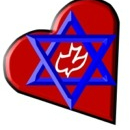The Nicene Creed~ Part 16
In our last post, we continued to explore the Nicene Creed. In this post, we continue to dig into the third article of faith in the Nicene Creed.
We believe in the Holy Spirit, the Lord, the giver of life,
who proceeds from the Father and the Son.
With the Father and the Son, He is worshiped and glorified.
He has spoken through the Prophets.
We believe in one holy catholic and apostolic church.
We acknowledge one baptism for the forgiveness of sins.
We look for the resurrection of the dead,
and the life of the world to come. Amen.
THE GIVER OF LIFE ~ In Creation
When it came time to formulate the Ruach’s role in the Trinity and its interaction with the world, the ancient Kehillah chose to emphasize the Ruach’s role as the Giver of Life. They viewed the work of the Ruach as bringing to completion the work of the Father and the Son. This is especially true when contemplating the Genesis account. On its most basic level among the ancient Messianic writers, the phrase Giver of Life evokes the Ruach’s presence with the other persons of the Trinity at creation, brooding over the waters, bringing life to them and through them, animating all living creatures with the breath of life.
Even though the Hebrew and Greek words for Ruach in Genesis 1:2 and Genesis 2:7 are different words, this did not stop the Fathers from understanding the same Ruach as the breath breathed ultimately into Adam, which brought life to him and his descendants.
Passages that connected the breath and the Ruach of God with creation, such as Genesis 1:2, as well as Psalm 33:6, figured prominently in the ancient Kehillah’s understanding of the third person of the Trinity’s involvement in creation. Other passages, such as Proverbs 8:22 and Wisdom 1:7, spoke of the Wisdom of God present at creation, which was often identified from the second century with the Ruach just as John had identified the Word (Logos) with the Son. Thus, in writers such as Irenaeus, there arose the conception of the two hands of God operative in creation: The Word and Wisdom, that is, the Son and the Ruach. This later evolved into the Son is referred to as the right hand of the Father and the Ruach as the finger of God. Either of these conceptions has as its preconception the source of creative power in the Father. The creative work originated in the Father and was exercised through the Son and perfected in Ruach. Thus, the peculiar work of the Ruach was to actuate and bring to fulfillment the creative work of Father and Son. The Ruach is the vitalizer and perfecter of the Trinity’s work in creation, and it was to Him, along with the Word, that God said, Let us make man in our image. Thus, the spiritual nature of humanity also became the unique purview of the Ruach, whose work is to bring fallen humanity back to the image that was lost. The ancient Kehillah did not confine the Ruach’s work to the original creation. The same Ruach present at creation enlivened the dry bones in Ezekiel’s vision and will revitalize our dry bones at the Resurrection. The Fathers also spoke of the Ruach’s role in the Son’s conception, memorializing it in the creedal statement and was incarnate by the Ruach of the Virgin Mary. They realized that just as human and divine were joined together in the incarnation through the power of the Ruach, so the Ruach also joins the divine to created things, bringing life through them too when His presence and power is invoked in consecration and blessing as the giver of Life. [1]
In my next post, we continue to dig into the third article of the Nicene Creed: We Believe in The Holy Spirt.
Click here for the PDF version.
[1] Elowsky, J. C., & Oden, T. C. (Eds.). (2009). We Believe in the Holy Spirit (Vol. 4, pp. 37–38).
